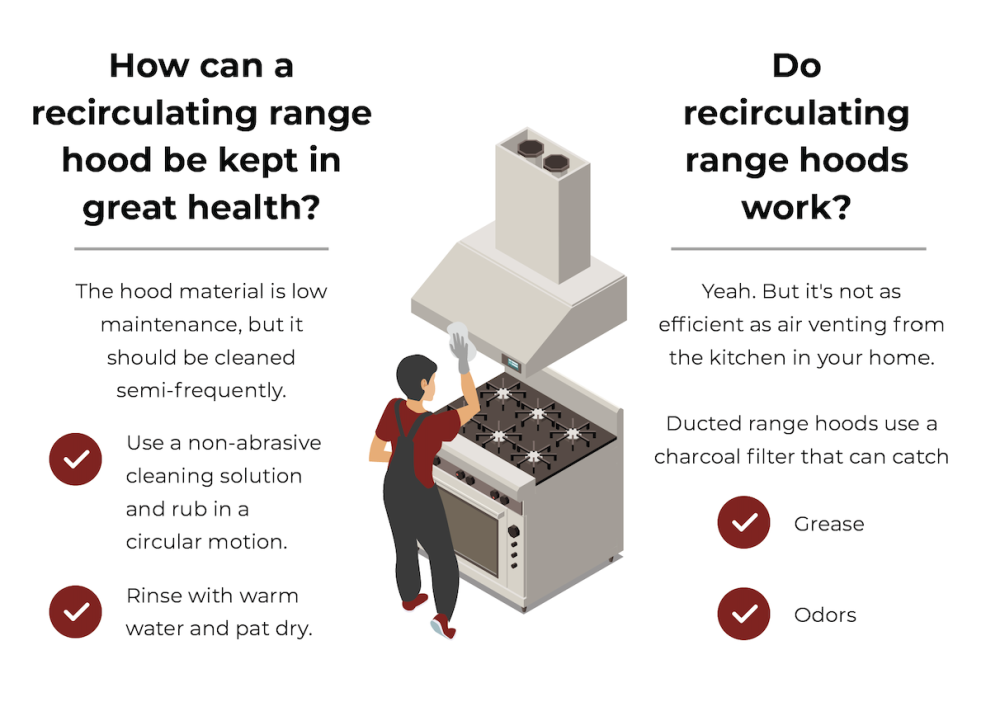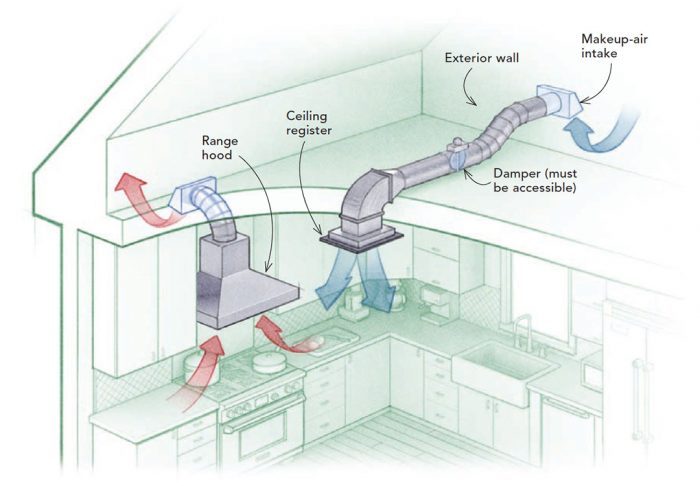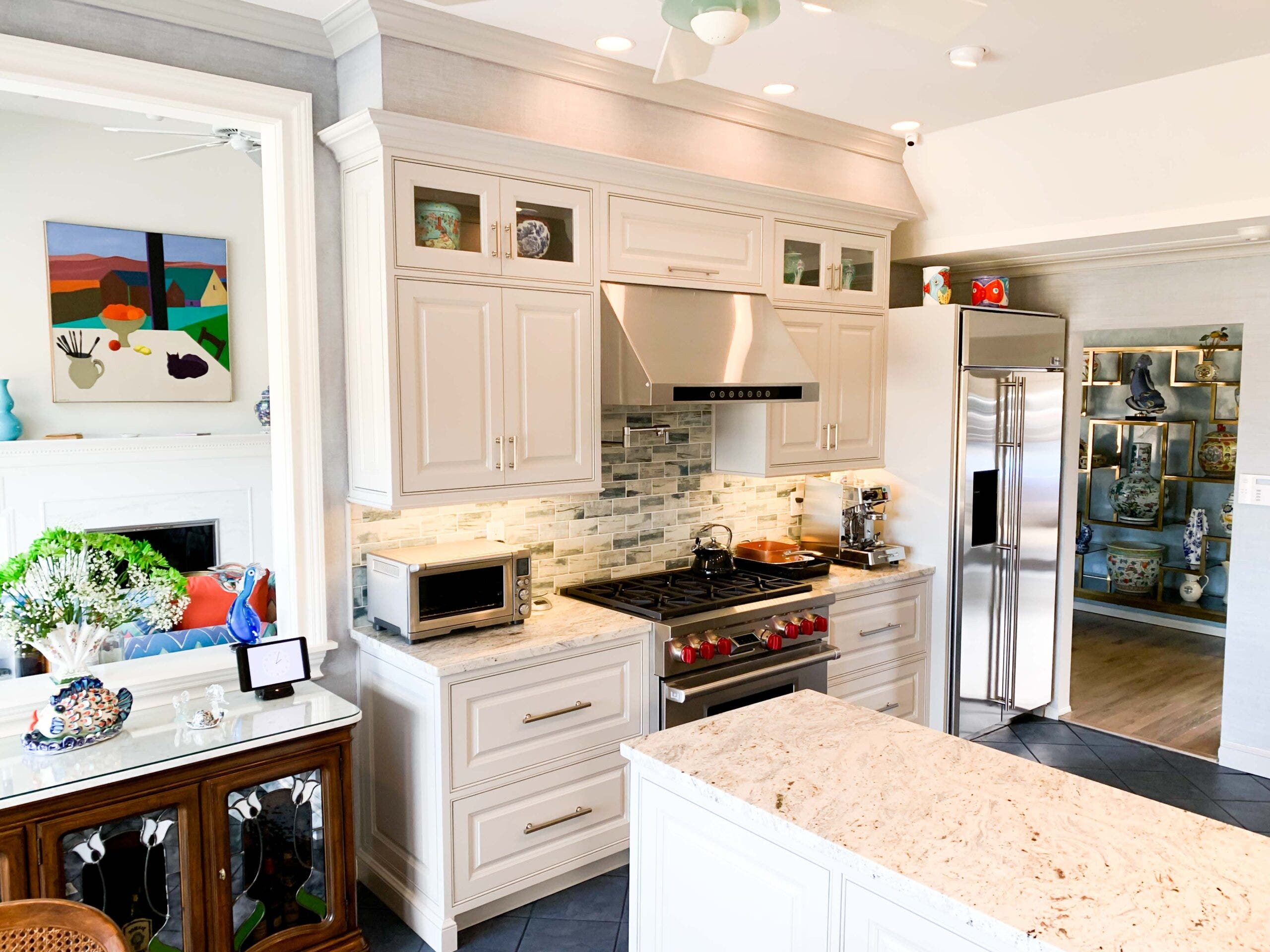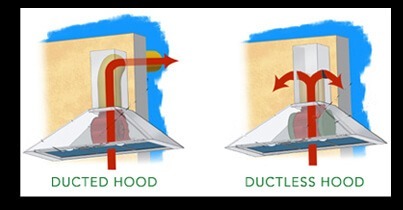Kitchen hoods work by using fans to suck up and remove airborne grease, smoke, and odors. These fans then push the air through a series of filters to trap grease particles and remove odors before releasing the clean air back into the kitchen.
The filters, usually made of aluminum or stainless steel, need regular cleaning or replacement to maintain proper functioning. Kitchen hoods are an essential component of any kitchen as they improve air quality, reduce the risk of fire, and keep the cooking area clean and odor-free.
Installing a kitchen hood ensures a healthier and more comfortable cooking environment.

Credit: www.worldcoppersmith.com
The Science Behind Kitchen Hoods
Kitchen hoods work by extracting airborne grease, smoke, and cooking odors through a filtration process. The process involves capturing and eliminating particles using a combination of filters. Air circulation is vital in distributing the extracted air, preventing it from recirculating back into the kitchen. Moreover, the filtered air is then either vented outside or recirculated back into the kitchen, ensuring a clean and odor-free environment. By understanding the science behind kitchen hoods, homeowners can effectively maintain a healthy and pleasant kitchen atmosphere.
Types Of Kitchen Hoods
There are two main types of kitchen hoods – ducted and ductless hoods. Ducted hoods, also known as vented hoods, expel air outside of the kitchen through a duct system. They are considered more effective in removing grease, smoke, and odors from the kitchen. Ducted hoods require proper duct installation for optimal performance.
Ductless hoods, on the other hand, recirculate air back into the kitchen. These hoods use filters to trap grease and other particles before the purified air is released back into the room. While ductless hoods provide flexibility in installation, they may not be as effective in removing odors as ducted hoods.
Benefits Of Using A Kitchen Hood
In a kitchen, ventilation is crucial for maintaining a healthy and comfortable cooking environment. Kitchen hoods, also known as range hoods or exhaust hoods, play a vital role in achieving this. One of the major benefits of using a kitchen hood is the improved air quality it provides. When cooking, various pollutants such as smoke, grease particles, and odors are released into the air. A kitchen hood with a filtration system effectively captures and removes these impurities. With their powerful fans, kitchen hoods create a suction force that pulls in the polluted air and expels it outside or through a filtering system. This process helps to eliminate cooking odors, preventing them from lingering in your home. By using a kitchen hood, you can ensure a cleaner and fresher atmosphere in your kitchen, making it a more pleasant space for cooking and dining.

Credit: www.greenbuildingadvisor.com
Factors To Consider When Choosing A Kitchen Hood
Kitchen hoods work by capturing and removing airborne grease, smoke, and odors during cooking. When choosing a kitchen hood, consider the size of the kitchen to ensure efficient ventilation. Moreover, take into account your cooking habits to determine the required airflow and filtration capacity. For smaller kitchens, prioritize space-saving designs, while larger kitchens may accommodate larger, more powerful hoods to effectively capture cooking byproducts.
Maintenance And Care Of Kitchen Hoods
Kitchen hoods operate by extracting grease, smoke, and odors through filtration and ventilation systems. Proper maintenance ensures efficient functioning, including regular cleaning and filter replacements to prevent buildup and ensure a clean and healthy kitchen environment.
| Cleaning Tips: Regularly clean hood with warm soapy water. Remove and wash filters every 1-3 months as needed. |
| Filter Replacement: Replace filters at least once a year. Check manufacturer’s instructions for specific guidance. |

Credit: www.prolinerangehoods.com
Frequently Asked Questions For How Do Kitchen Hoods Work
Do Kitchen Hoods Have To Vent Outside?
Yes, kitchen hoods should vent outside to remove cooking odors and airborne grease efficiently. Proper ventilation also helps in reducing indoor air pollutants and maintaining a healthy indoor environment. It’s necessary for the hood to vent outside to perform its function effectively.
How Does A Cooking Hood Work?
Cooking hoods work by capturing and extracting smoke, steam, and odors from the kitchen. They use fans to pull air through filters that trap grease and other particles. The filtered air is then expelled outside through a vent or recirculated back into the kitchen.
Do Kitchen Hood Vents Really Work?
Yes, kitchen hood vents are effective in removing smoke, odors, and airborne particles. They help to improve indoor air quality by extracting cooking fumes and preventing them from spreading throughout the house. Regular use of a kitchen hood vent can help maintain a clean and fresh environment in your kitchen.
What Are The Disadvantages Of Kitchen Hoods?
Kitchen hoods can be noisy and cumbersome, requiring regular upkeep and installation costs. They may also reduce kitchen space and affect the aesthetic.
Conclusion
Kitchen hoods play a vital role in maintaining a clean and healthy cooking environment. By effectively removing grease, odors, and smoke, they contribute to better air quality and fire safety. Understanding how kitchen hoods work can help homeowners make informed decisions for their kitchen ventilation needs.
Explore and invest in the right kitchen hood to ensure a comfortable and safe cooking experience.

